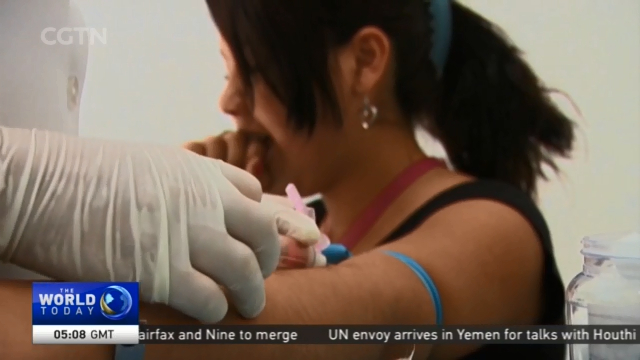
14:09, 26-Jul-2018
Fight Against HIV & AIDS: Girls make up the vast majority of new teenage infections
Updated
13:08, 29-Jul-2018
02:27

Every three minutes, a teenage girl is infected with HIV. That's according to a new report from the United Nations. Big progress has been made against the disease over the last two decades. But as CGTN's Liling Tan reports, much work remains. Especially, for young girls.
Adolescents aged 15 to 19 continue to bear the brunt of the AIDS epidemic, warned UNICEF in its latest HIV/AIDS report. The agency found that in 2017, 250-thousand adolescents were infected with HIV. That's nearly 30 teenagers per hour, and two out of three were girls.
VIVIAN LOPEZ HIV/AIDS ADVOCACY SPECIALIST, UNICEF "It's because adolescent girls in many parts of the world still don't control their bodies. The rate of gender-based violence, sexual abuse, harassment, exploitation is far too high. And we are never going to put this epidemic in check if adolescent girls cannot control who they want to have sex with, when they want to have sex."
To counter this, UNICEF and other agencies are working to improve adolescent girls' access to testing and treatment, as well as prevention services. But they're also approaching the problem in another way, by keeping girls in school.
VIVIAN LOPEZ HIV/AIDS ADVOCACY SPECIALIST, UNICEF "We've shown that by keeping girls in schools alone, you can actually increase their ability to access services, to be less at risk, and we've seen those programs have quite an impact in reducing infections."
The crisis is most prevalent in sub-Saharan Africa, where women already make up 60 percent of people living with HIV. In eastern and southern Africa, women are on average infected with HIV five to seven years earlier than men. It's a glimpse of a broader slow-down around the world. Last week, the UN agency UNAids issued a global warning that new HIV infections are up across nearly 50 countries. In two decades, it has doubled in eastern Europe and central Asia, and jumped by more than 25 percent in the Middle East and North Africa.
LILING TAN NEW YORK "But it isn't just new infections. The data show that while the number of AIDS-related deaths in adults and young children have decreased, deaths among adolescents remain relatively unchanged. And all this is holding back progress to end the global epidemic. Liling Tan, CGTN, New York."

SITEMAP
Copyright © 2018 CGTN. Beijing ICP prepared NO.16065310-3
Copyright © 2018 CGTN. Beijing ICP prepared NO.16065310-3